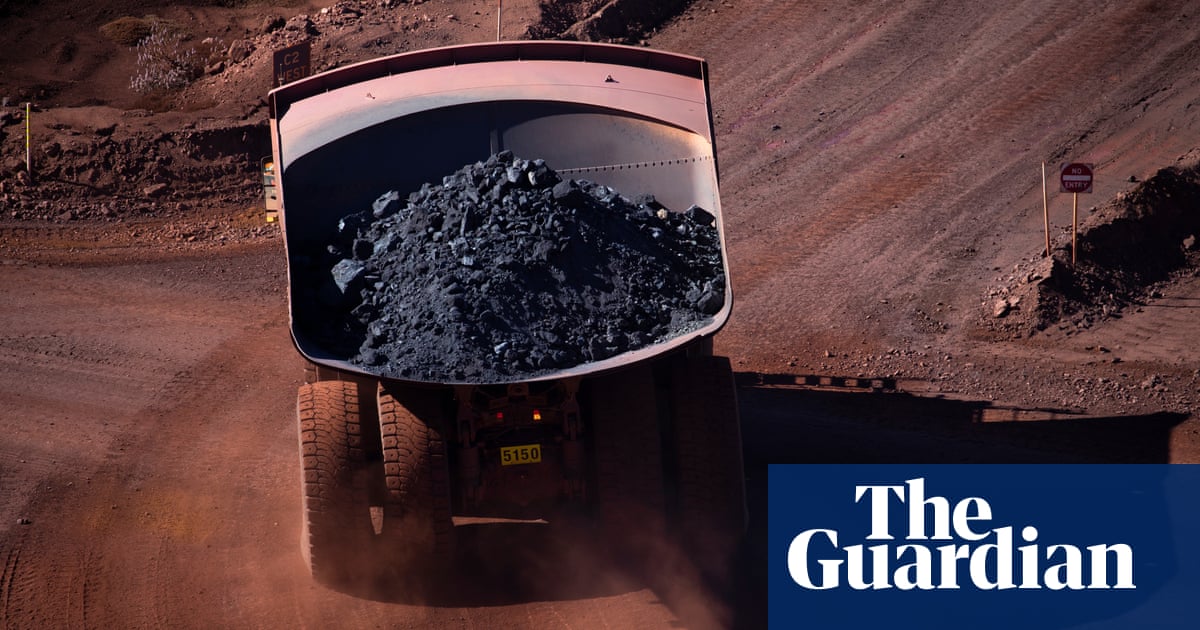Five of Australia’s biggest fossil fuel producers could be on the hook for hundreds of billions of dollars in damages after a US research team developed a method to link individual companies to specific climate harms and put a dollar figure to the impact.
This is the result of a new peer-review studypublished in the journal Naturethat sought to establish a method that would allow courts to quantify the economic loss caused by fossil fuel producers for one kind of climate impact – extreme heat.
Looking at the period 1991 to 2020, the researchers, Christopher Callahan at Stanford University in California and Justin Mankin at Dartmouth College in New Hampshire, used historical emissions data for the world’s five biggest oil producers: BP, Gazprom, Saudi Aramco, ExxonMobil and Chevron.
They then sought to understand how the emissions from these companies contributed to extreme heat. This was defined as the temperature of the hottest five days in a year.
The team developed a replicable method to quantify the damage linked to a single company, with the figure running into the trillions for the world’s largest fossil fuel producers.
It suggested state-owned oil companies Saudi Aramco and Gazprom were responsible for US$2.05tr and $2tr in damages respectively. Chevron, ExxonMobil and BP were each found to be responsible for $1.98tr, $1.91tr and $1.45tr in losses respectively.
In a separate analysis of emissions data for five major Australian resource companies – BHP,Rio Tinto, Santos, Whitehaven Coal and Woodside Energy – Callahan assessed the total damages from their collective emissions at more than US$600bn, or A$929.47bn.
Sign up for the Afternoon Update: Election 2025 email newsletter
“Our analysis is very explicitly thinking about emissions that are already occurred and the sort of historical changes in extreme heat, and attributing those to emissions that have been already detected and attributed to specific actors,” Callahan said.
“Even just from that we get numbers in the trillions, when you aggregate globally over the last 30 years in terms of the losses associated with any individual company, but GDP growth losses from extreme heat are a very small fraction of the total cost of climate change.”
The difficulty in establishing causation and calculating a single company’s contribution to climate harms has made courts in many jurisdictions, particularly in Australia, reluctant to hold individual fossil fuel producers to account for the climate impact of their projects.
When seeking approval to build and operate its $5.6bn Barossa gasfield in a remote area off the far north Australian coast, Australian oil companySantoswas asked by the Australian Conservation Foundation whether it had considered potential climate harms.
Santos responded by arguing “there are limitations to linking emissions from the activity to any specific climate change impacts”.
Sign up toAfternoon Update: Election 2025
Our Australian afternoon update breaks down the key election campaign stories of the day, telling you what’s happening and why it matters
after newsletter promotion
“Santos invited ACF to provide further information regarding how it is able to undertake an analysis that links climate change impacts from the activity to specific environments or ecosystems,” the company said.
Callahan said the work provides a foundation for future research to link the activities of specific oil, gas and coal producers to additional climate harms such as drought, flooding and sea level rise, though he added there was still “a long way to go” before a tobacco or asbestos-style lawsuit succeeds.
“Until two weeks ago, it was unclear whether it was scientifically supported to say an individual emitter can be linked to the impact that you’re suing over or that you are trying to recoup costs for. That scientific connection can absolutely be made,” he said.
“It is no longer scientifically supported for actors to argue that there is plausible deniability, that it is impossible to link any of an individual actor to any impact of climate change.
“That statement, that there is a sort of uncrossable gap between where you emit and some other impact down the road, we’ve shown that to be fallacious.”
Several significant law suits have been brought against major US oil companies, includingMunicipalities of Puerto Rico v Exxon Mobil Corpand other cases brought by individual US state governments.
On Friday, Hawaiibecame the 10th US stateto take fossil fuel producers to court over alleged climate deception, prompting a counter-suit by the Trump administration in an attempt to block the filing.
Next to the United States, Australia is the second most active jurisdiction in the world for climate litigation, according to Melbourne Law School’s Climate Change litigation databasewhich currently tracks 627 cases.
Many of these cases include smaller decisions involving council planning, regulations or access to information as the database uses a broader definition.
